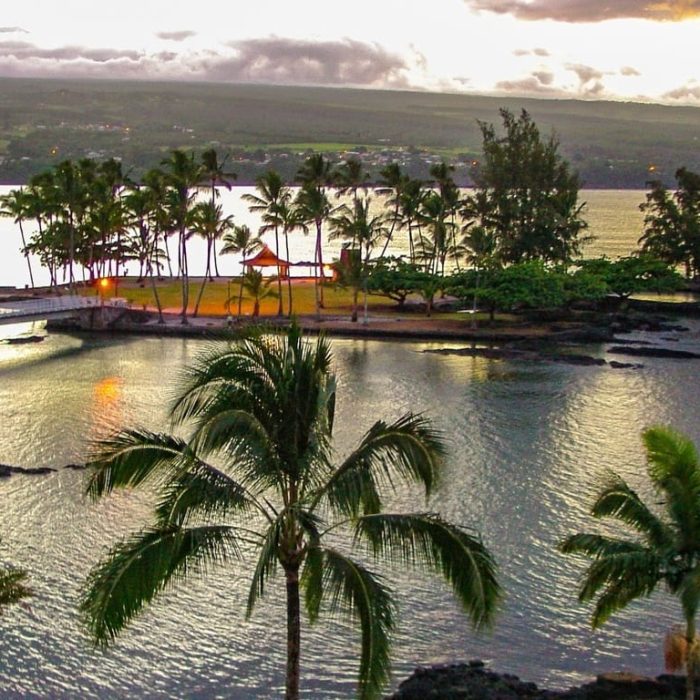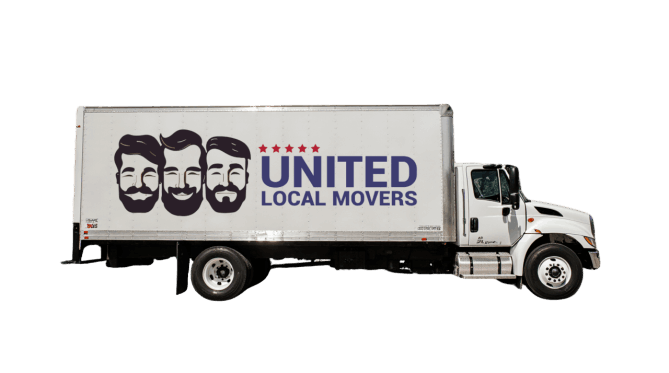Home > Interstate Moving > Moving to Hawaii > Moving to Hilo
Moving to Hilo
Hilo, located on the Big Island of Hawaii, is the largest town on the island and one of the most unique places to live in the United States. With a population of just over 45,000, Hilo is small compared to Oahu’s bustling Honolulu, but it has its own character, history, and lifestyle. Known for its lush rainforests, waterfalls, and black-sand beaches, Hilo offers a quieter, more affordable, and more authentic Hawaiian experience than many of the state’s tourist-heavy destinations.
Moving to Hilo means joining a community shaped by its deep Hawaiian heritage, natural beauty, and slower pace of life. It’s a place where people value family, community, and respect for the land. At the same time, Hilo faces challenges like heavy rainfall, limited nightlife, and fewer job opportunities compared to Oahu or Maui.
This guide explores everything you need to know before relocating — from housing and cost of living to schools, economy, transportation, and culture — so you can decide if Hilo is the right place for your next move.

Why More People Are Moving from the Mainland to Hilo
Affordability is the top reason many mainlanders move to Hilo. While still more expensive than most U.S. cities, Hilo’s housing prices and rental rates are significantly lower than those in Honolulu, Maui, or Kauai. Families relocating from California or New York often find that their money goes further in Hilo.
Lifestyle is another attraction. Hilo is less commercialized than other Hawaiian towns. It maintains a laid-back, community-oriented atmosphere with fewer tourists, making it feel like “real Hawaii.” Residents enjoy local farmers markets, cultural festivals, and strong ties to Hawaiian traditions.
Nature is a huge draw. Hilo is surrounded by waterfalls like Rainbow Falls and Akaka Falls, tropical rainforests, and Volcanoes National Park. For people who love outdoor adventures and being immersed in nature, Hilo is unmatched.
Finally, climate is a factor. While Hilo is the rainiest city in the United States (averaging more than 120 inches per year), this rainfall creates lush greenery and cooler temperatures compared to the drier, hotter west side of the island.
Pros of Living in Hilo
The biggest pro is affordability compared to the rest of Hawaii. Housing costs, while high compared to the mainland, are much lower than in Honolulu or Maui.
Community is another strength. Hilo is tight-knit and family-oriented. Residents value Hawaiian culture and traditions, and newcomers often find themselves welcomed into community events and gatherings.
Natural beauty surrounds daily life. Waterfalls, rainforests, volcanoes, and black-sand beaches are all nearby. Residents often spend weekends hiking, swimming, or exploring the island’s diverse landscapes.
The slower pace of life is another advantage. Hilo isn’t about luxury resorts or high-end shopping — it’s about enjoying nature, family, and culture. Many retirees and families appreciate this balance.
Finally, Hilo has a rich cultural identity. Events like the Merrie Monarch Festival, celebrating hula and Hawaiian culture, attract visitors from around the world and showcase the town’s heritage.

Ready to get moved? Get a FREE quote now
Book your move easily and stress-free!
Cons of Living in Hilo
Weather is the biggest challenge. Hilo is the rainiest city in the U.S., with frequent showers and cloudy days. While this creates lush greenery, it can be difficult for people who prefer sunny, dry climates.
Job opportunities are limited. Most employment is in healthcare, education, retail, or local government. High-paying jobs in finance, tech, or corporate sectors are scarce, and many residents work multiple jobs.
Entertainment options are fewer compared to Oahu or Maui. Nightlife is minimal, and large-scale shopping or dining experiences are limited. Many people travel to Kona or Honolulu for broader amenities.
Isolation is another factor. The Big Island is far from the mainland, and flights are expensive and time-consuming. Even within the island, travel can take hours due to long, winding roads.
Finally, infrastructure is limited. While healthcare facilities exist, specialized care often requires flying to Oahu. This can be challenging for families or retirees with health concerns.

What Life is Like in Hilo
Life in Hilo is simple, slow, and rooted in community. Residents value family gatherings, outdoor activities, and cultural traditions. The pace is much slower than Honolulu, and people often describe it as more relaxed and authentic.
Neighborhoods reflect the town’s diversity. Downtown Hilo has historic charm, local shops, and farmers markets. Suburban areas like Waiakea and Keaukaha provide family-friendly living, while Puna offers more rural, affordable housing options.
Food culture highlights local traditions. Farmers markets provide fresh tropical fruits, vegetables, and local treats like poke and Hawaiian plate lunches. Restaurants emphasize local and Asian fusion cuisine, reflecting Hawaii’s multicultural population.
Community events are central to life. The Merrie Monarch Festival, Hilo Farmers Market, and local cultural gatherings showcase pride in Hawaiian heritage.
For families, students, and retirees, Hilo offers a lifestyle that prioritizes community, affordability (by Hawaiian standards), and a close connection to nature.
Living Costs in Hilo
Hilo’s cost of living is high compared to the mainland but lower than most of Hawaii.
| Category | Hilo | National Average |
|---|---|---|
| Housing (Rent per Month) | $1,600 | $1,570 |
| Utilities | $200 | $180 |
| Groceries | $380 | $330 |
| Transportation | $170 | $140 |
| Healthcare | $460 | $440 |
Housing is cheaper than in Honolulu, but groceries, utilities, and healthcare are still more expensive than on the mainland because of shipping costs.

Ready to get moved? Get a FREE quote now
Ready to get moved? Get a FREE quote now
Schools and Education in Hilo
Hilo is served by Hawaii’s statewide Department of Education. Schools include Hilo High School, Waiakea High School, and charter schools like Kua o ka Lā. Performance varies, but smaller class sizes and a strong sense of community are common.
Private schools, such as St. Joseph School, provide additional options for families seeking religious or college-prep education.
Higher education is represented by the University of Hawaii at Hilo, which offers bachelor’s and graduate programs in marine science, astronomy, pharmacy, and Hawaiian studies. Hawaii Community College also provides vocational training and associate degrees.
Hilo’s focus on education and Hawaiian culture makes it a unique environment for students of all ages.
Transportation and Getting Around
Hilo is primarily car-dependent. Roads connect the town to other parts of the island, but travel times can be long due to the island’s size.
Public transportation is limited to Hele-On Bus service, which provides basic routes but isn’t practical for daily commuting.
For air travel, Hilo International Airport connects residents to Honolulu, Maui, and the mainland, though many long-distance flights require connections.
Cycling and walking are practical in downtown Hilo but less so in suburban or rural areas.

United Local Movers: Our Services
Relocating to Hilo requires movers familiar with island logistics. United Local Movers provides professional packing, secure storage, and long-distance relocation services tailored for Hawaii.
Whether moving into a downtown Hilo home, a student apartment near the University of Hawaii, or a rural property in Puna, our crews know how to manage the details of an island move.
With transparent pricing and reliable service, United Local Movers ensures every move to Hilo is stress-free.
Average Cost to Move to Hilo
Moving to Hilo costs more than mainland relocations due to shipping logistics.
| Move Type | Estimated Cost |
|---|---|
| Local Move (1-2 Bedrooms) | $1,200–$2,500 |
| From Mainland U.S. | $5,200–$10,200 |
| Full Packing Services | + $500–$1,000 |
| Storage Options | $150–$300 per month |
United Local Movers specializes in Hawaii relocations, coordinating shipping and delivery for a seamless move.


How to Choose the Right Moving Company
When relocating to Hilo, it’s important to choose movers with Hawaii experience. Always confirm licensing, insurance, and get written estimates.
Look for movers who understand ocean shipping, delivery delays, and customs if moving from outside the U.S.
Customer reviews are valuable for identifying reliable movers. Avoid companies that promise unrealistic delivery times or unusually low costs.
United Local Movers combines national reach with local island expertise, ensuring peace of mind.
Final Thoughts
Hilo is a place where tradition, affordability, and natural beauty meet. Its rainforests, waterfalls, and volcanic landscapes create an environment unlike anywhere else in the world. While heavy rainfall, limited jobs, and geographic isolation are drawbacks, Hilo offers community, affordability (by Hawaiian standards), and a slower pace of life that appeals to families, retirees, and students.
For those seeking a unique Hawaiian lifestyle, Hilo is a wonderful choice. And with United Local Movers, your relocation to Hilo can be professional, smooth, and stress-free.




